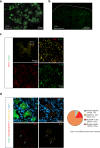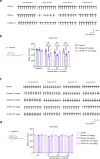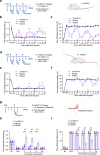Design of an equilibrative nucleoside transporter subtype 1 inhibitor for pain relief
- PMID: 39737929
- PMCID: PMC11685430
- DOI: 10.1038/s41467-024-54914-7
Design of an equilibrative nucleoside transporter subtype 1 inhibitor for pain relief
Abstract
The current opioid crisis urgently calls for developing non-addictive pain medications. Progress has been slow, highlighting the need to uncover targets with unique mechanisms of action. Extracellular adenosine alleviates pain by activating the adenosine A1 receptor (A1R). However, efforts to develop A1R agonists have faced obstacles. The equilibrative nucleoside transporter subtype 1 (ENT1) plays a crucial role in regulating adenosine levels across cell membranes. We postulate that ENT1 inhibition may enhance extracellular adenosine levels, potentiating endogenous adenosine action at A1R and leading to analgesic effects. Here, we modify the ENT1 inhibitor dilazep based on its complex X-ray structure and show that this modified inhibitor reduces neuropathic and inflammatory pain in animal models while dilazep does not. Notably, our ENT1 inhibitor surpasses gabapentin in analgesic efficacy in a neuropathic pain model. Additionally, our inhibitor exhibits less cardiac side effect than dilazep via systemic administration and shows no side effects via local/intrathecal administration. ENT1 is colocalized with A1R in mouse and human dorsal root ganglia, and the analgesic effect of our inhibitor is linked to A1R. Our studies reveal ENT1 as a therapeutic target for analgesia, highlighting the promise of rationally designed ENT1 inhibitors for non-opioid pain medications.
© 2024. The Author(s).
Conflict of interest statement
Competing interests: N.J.W., J.H., R.-R.J., and S.-Y.L. are inventors of the patent application that was filed (028193-0022-WO01). The rest of the authors declare no competing interests.
Figures








References
Publication types
MeSH terms
Substances
Associated data
- Actions
Grants and funding
- W81XWH2110756/U.S. Department of Defense (United States Department of Defense)
- W81XWH2210646/U.S. Department of Defense (United States Department of Defense)
- R61 NS138215/NS/NINDS NIH HHS/United States
- RF1 NS131812/NS/NINDS NIH HHS/United States
- R61NS138215/U.S. Department of Health & Human Services | NIH | National Institute of Neurological Disorders and Stroke (NINDS)
LinkOut - more resources
Full Text Sources

